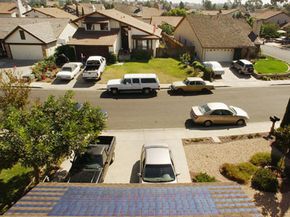You've probably seen solar panels on the rooftops of houses or office buildings, but have you ever seen solar shingles up there? If you have, chances are you didn't know it.
Solar shingles are an integrated photovoltaic (PV) building product, which means they directly generate electricity from sunlight. They're made with specific materials that naturally undergo an electronic process in the presence of sunlight.
Advertisement
From a distance, they look like ordinary roof shingles. But up close, it's obvious they're more than that. Solar shingles are used on the roofs of commercial and residential buildings to generate electricity, and some models can convert the electricity to heat.
Solar shingles are made of the same materials as those used in regular solar panels, including wire, a photosensitive waterproof product to protect the roof from outdoor elements, and material that can generate an electric current in sunlight.
In fact, solar shingles and solar panels operate the same way and are overall quite similar. The main difference between them is cost. Solar panels have one function: They generate electricity. But solar shingles serve a dual purpose -- they generate electricity and act as shingles, which makes them less expensive in the long run.
If you're curious how solar shingles work, turn to the next page to learn about their interesting technical aspects.
Advertisement


